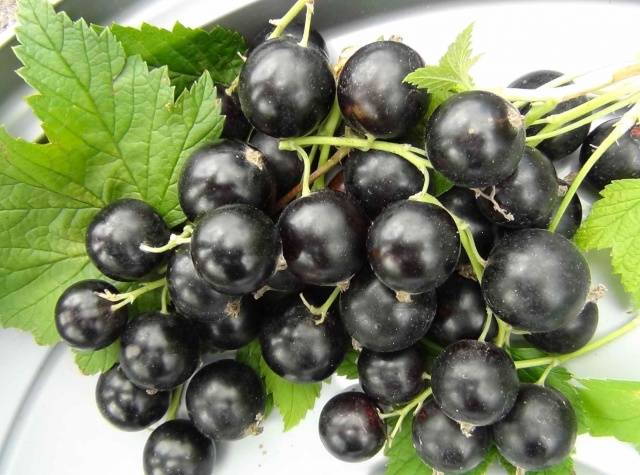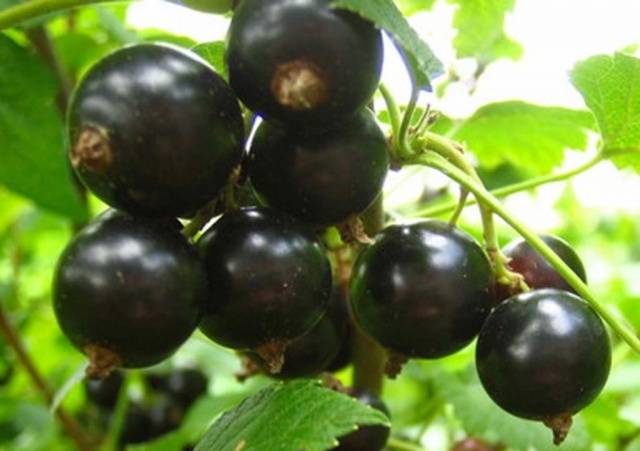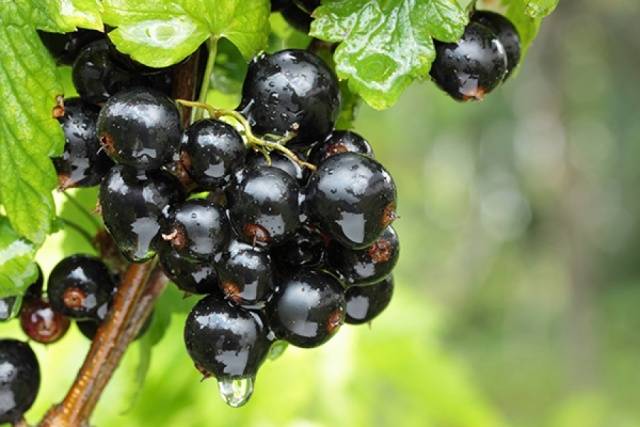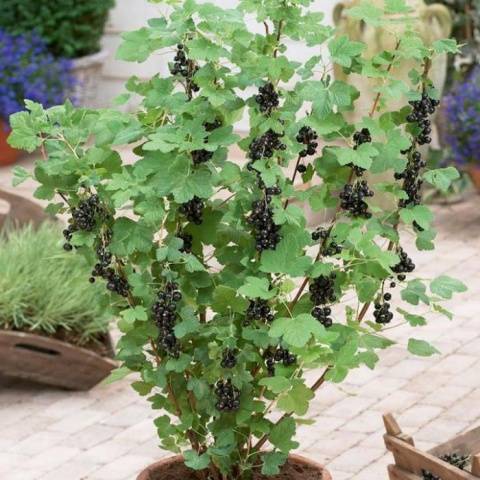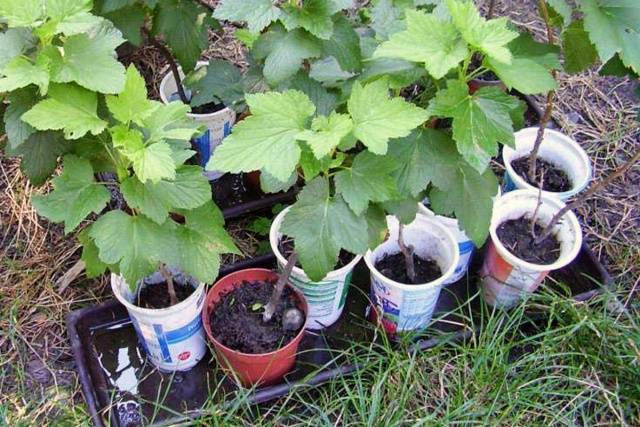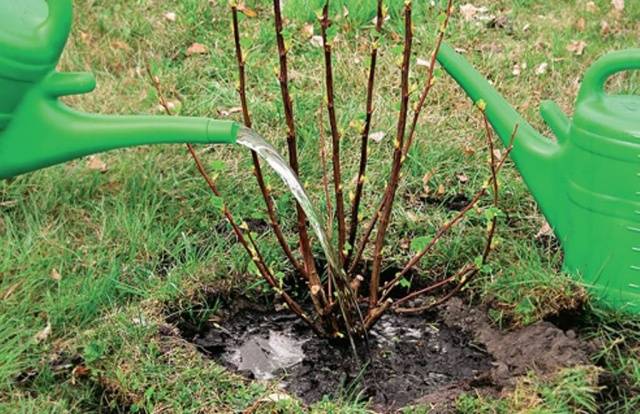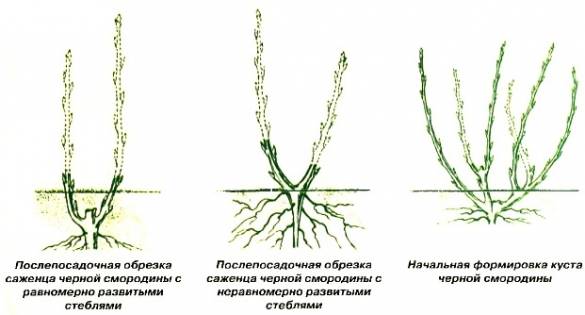Content
The history of such a berry as black currant dates back to the tenth century. The first berry bushes were cultivated by the Kiev monks, later they began to grow currants on the territory of Western Europe, from there it has already spread throughout the world. One can endlessly talk about the benefits of black currant and its extraordinary taste: one thing is clear - every summer cottage must have at least one bush of sweet berries. One of the old and popular varieties among the population is Perun, which does not give up its position even with the emergence of the newest hybrids and varieties. The advantages of this variety are considered high yield, unpretentiousness and excellent taste. There are also some nuances that are best found out at the initial stage of growing.
Photos, reviews and descriptions of the Perun currant variety are given below. This article will tell you about all the features of this crop and the rules for its cultivation.
Species characteristics
The Currant variety Perun is the brainchild of domestic breeders, he was bred by A.I. Astakhov back in the 90s. Since 1995, Perun has been included in the State Register and recommended for cultivation in the Central and Central Black Earth regions.
Description of the Perun variety:
- black currant with medium-late ripening - berries ripen from the end of July to the first half of August;
- bushes are medium-sized, but spreading, dense;
- young shoots are light green, slightly pubescent;
- growing shoots are slightly curved;
- leaves are three-lobed, dark green, wrinkled;
- buds on currant shoots are weakly colored, covered with short down;
- inflorescences in Perun are bisexual, therefore the currant is considered self-fertile (other varieties of culture are not needed for pollination of flowers);
- flowers are very noticeable, large, red-violet hue;
- clusters of medium length, each of them from 5 to 11 fruits;
- the berries of Perun are large, their average weight is 2 grams, there are specimens and 4 grams each;
- the shape of the fruit is round, regular, the skin is shiny, black;
- commercial attractiveness of currants is high;
- the separation of berries is dry - the fruits are not damaged during picking, therefore they do not flow or wrinkle;
- tasting marks of Perun are very high - 4.9 points (out of a possible 5);
- the aroma is pleasant, strongly pronounced;
- currants have an average immunity to powdery mildew, kidney mites, anthracnose, almost never Perun's bushes are affected by aphids;
- the plant has good frost resistance - the shrub will withstand a temperature drop to -25 degrees without shelter;
- Perun is not afraid of recurrent spring frosts, its flowers tolerate a short-term decrease in temperature;
- the yield of black currant is at a high level - up to two kilograms per bush;
- the crop is suitable for long-term storage and transportation;
- black currants of this variety can be propagated in any way (by dividing the bush, cuttings, layering).
Advantages and disadvantages
Photos of currants Perun will attract any summer resident - the berries are large, glossy, about the same size. It is not surprising that this old variety is still relevant today, because Perun has many advantages, such as:
- balanced taste and strong aroma;
- ease of reproduction;
- high productivity;
- resistance to common diseases and pests;
- good frost resistance;
- the ability of flowers to self-pollinate and normally tolerate recurrent frosts;
- suitability for long-term storage and transportation;
- universal purpose of currant berries.
Perun, mainly, do not like those farmers who are engaged in the cultivation of currants for sale. Although this variety pleases with its stability, high yields and excellent taste, the size of its fruits is not the same - and this is something that customers do not really like and spoils the presentation of the product.
Another nuance is the strong dependence of the size and quality of berries on weather conditions. For example, in a dry summer, the harvest of Perun will be worse, the berries themselves will be smaller, but the taste of the fruits will be sweeter and richer.
Agricultural technology and its features
The Perun variety cannot be called capricious - this black currant will require no more care and attention than any other. But one should not forget about the great relationship between the yield and the climatic characteristics of the region, the weather in a particular season, the type of soil. The quality of the berries is highly dependent on the listed indicators.
Shrub planting
Very often summer residents complain about the poor survival rate of currant cuttings. Indeed, this culture can be difficult to propagate and start on the site. For the result to be positive, you need to make some effort and know some tricks.
The first thing an agrarian should know is currant seedlings cannot be sold with an open root system, because such planting material will not take root. The Perun variety from good nurseries is sold in pots.
The second condition is the correct landing site. Black currant loves the sun, therefore, it should be planted in a well-lit open place, without shade from trees and buildings. The soil should be nutritious, friable, air-permeable, not retaining moisture.
And the third criterion for a successful landing is time. Planting black currants is recommended only in autumn.... In central Russia, the optimal timing for planting mid-late Perun is the second half of September - early October.
The very planting of currants Perun is simple:
- A couple of weeks before the intended planting, a pit is prepared with a depth of about 45 cm.
- The soil removed from the planting pit is mixed with a bucket of humus and 100 grams of superphosphate.
- If there are several bushes, an interval of 180-200 cm is observed between them, since Perun is a spreading shrub.
- The seedling is installed in the center of the pit and gradually sprinkle its roots with earth.
- The aerial part of the cutting of Perun must be cut to two buds - this is a very important requirement that should not be neglected.
- After planting, the shrub is watered abundantly, it is recommended to mulch the soil with a thick layer of organic matter (peat, humus, sawdust, dry foliage).
If you do not cut the shoot of the freshly planted currant, the plant will not have enough strength to develop the root system - all the activity of the cuttings will be directed to the growth of shoots.
Before the onset of severe cold weather, the currant stalk is insulated, covering it with agrofibre, a bucket, and covering it with covering material or soil.Before wintering, Perun must receive a sufficient amount of moisture, so watering should be abundant and frequent, with the first frost they stop.
Competent care
Black currant Perun is not the most capricious "inhabitant" of the garden. There is nothing special in caring for a shrub, it is only important to follow the schedule of events and not neglect the recommendations of specialists.
You need to take care of Perun blackcurrant like this:
- Watering black currants should be regular and frequent. Perun tolerates drought well, but the yield will be significantly higher if a drip irrigation system is installed near the bush. The summer resident should pay special attention to watering during the period of crop formation, ripening of berries and immediately after harvesting. Autumn watering is very important, since the survival of the shrub in the winter will depend on the condition of the root system.
- Fertilizing black-fruited Perun will not often. Autumn or spring feeding once a year is quite enough. If a fertilizers are applied in autumn, you can dwell on organic matter such as manure, bird droppings, wood ash, compost. In the spring, it is better to fertilize Perun currants with minerals, focusing on nitrogen, potassium and phosphorus.
- Shrub needed shape in the process of its growth and development. It is advised annually to carry out sanitary pruning, which involves the removal of dry, damaged and diseased shoots.
- Currant roots are shallow, therefore it is important delete weeds around the bushes of Perun and regularly loosen the soil to provide air access to the root system. Mulch will help protect the roots from overheating and drying out.
- The resistance to diseases of the black currant variety Perun is average. Therefore, in early spring you need to spend preventive treatment shrubs, repeating it before flowering and after flowering. If insect pests are noticed, additional spraying of Perun's bushes with insecticides will be required.
- In most of the country Perun hibernates without shelter... In regions with a temperate climate and snowy winters, the frost resistance of the variety will be quite enough. In the more northern regions, it is better not to grow black currants of the Perun variety, since the timing of its ripening is quite late (the berries may not ripen before the onset of cold weather).
Feedback
Conclusion
Even negative reviews about the black currant variety Perun indicate that this culture is still not forgotten and is in demand among farmers. Twenty years is a decent period for any type of cultivated plants, because in the modern world, new varieties and hybrids appear every day.
Perun has crossed the twenty-year milestone and continues to delight summer residents with abundant harvests of large and very tasty berries. This black currant definitely deserves attention.
